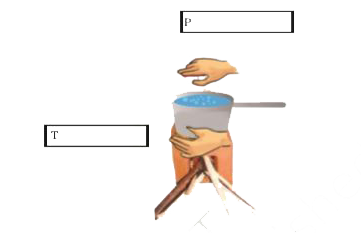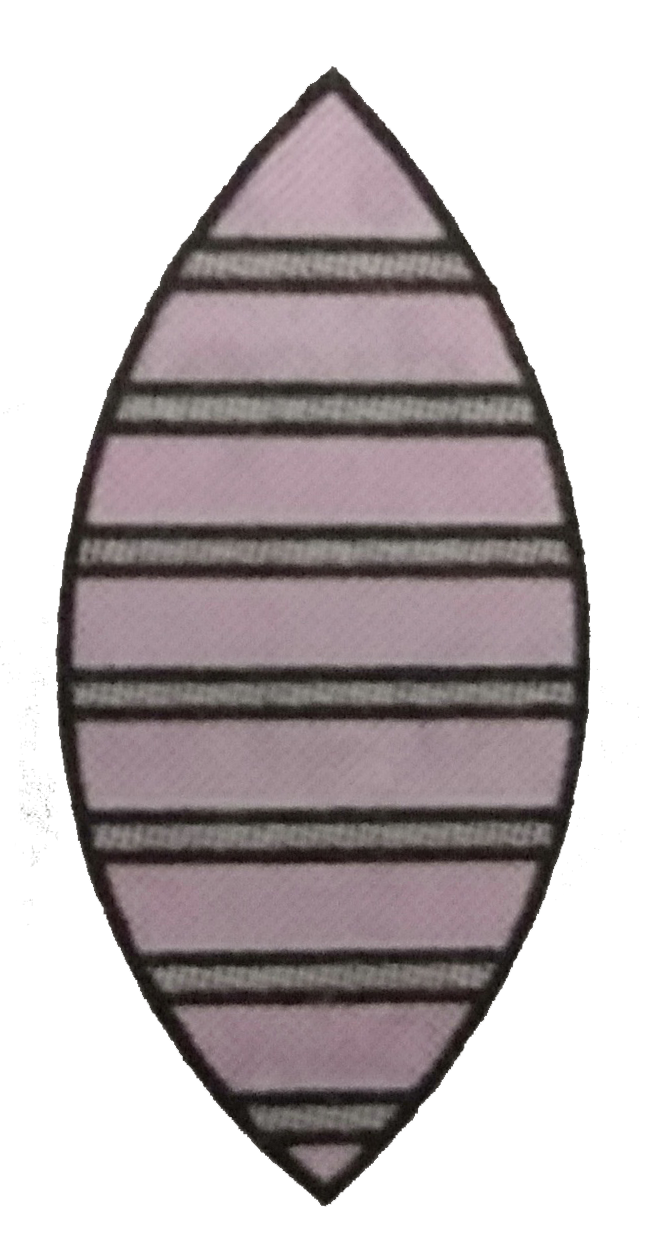Observe the picture given in Fig. 11.6. A sheet of some material is placed at position ‘P’, still the patch of light is obtained on the screen. What is the type of material of this sheet?

transparent material
opaque material
translucent material
None of these
The correct Answer is:A
Light is passed through and reflection occurs only in transparent materials. So, sheet P must be a transparent material like a ground glass or a thin plastic. Image is formed on the screen because transparent materials did not change the path of light.
Topper's Solved these Questions
- LIGHTBOOK - NCERT EXEMPLARCHAPTER - LIGHTEXERCISE - SHORT ANSWER QUESTIONS
10 Videos
- LIGHTBOOK - NCERT EXEMPLARCHAPTER - LIGHTEXERCISE - LONG ANSWER QUESTIONS
3 Videos
- FUN WITH MAGNETSBOOK - NCERT EXEMPLARCHAPTER - FUN WITH MAGNETSEXERCISE - LONG ANSWER QUESTIONS
7 Videos
- MOTION AND MEASUREMENT OF DISTANCES BOOK - NCERT EXEMPLARCHAPTER - MOTION AND MEASUREMENT OF DISTANCES EXERCISE - LONG ANSWER QUESTIONS
4 Videos
Similar Questions
Observe the picture given in Fig. 11.1 carefully.

A patch of light is obtained at B, when the torch is lighted as shown. Which of the following is kept at position A to get this patch of light?
View SolutionObserve the picture given as Fig 4.8. Water is being boiled in a pan of wide base.

Which position P or T will feel warmer ?
View Solution
Knowledge Check
Interference fringes were produced using light in a doulbe-slit experiment. When a mica sheet of uniform thickness and refractive index 1.6 (relative to air) is placed in the path of light from one of the slits, the central fringe moves through some distance. This distance is equal to the width of 30 interference bands if light of wavelength 4800 is used. The thickness (in μm) of mica is
A90B12C14D24In Young's experiment using monochromatic light , the fringe pattern shifts by a certain distance on the screen when a mica sheet of refractive index 1.6 and thickness 2 micron is introduced in the path of one of the interfering waves. The
mica sheet is then removed and the distance between the slits and the screen is doubled. it is found that the distance between successive maxima now is the same as the observed fringe shift upon the introduction of the mica sheet . The wavelength of light isA5762ÅB5825ÅC6000ÅD6500Å
Observe the picture given in Fig. 15.1 carefully and answer the following questions.

(A) What is covering the nose and mouth of the police man ?
(b) Why is he putting a cover on his nose?
(C )Can you comment on air quality of the place shown in the Fig.15.1?
View SolutionA lens shown in Fig. 6(b).75 is made of two different materials. A point object is placed on the principal axis of the lens. How many images will be obtained ?

View SolutionA student is performing an experiment with two triangular glass prisms. He places the first glass prism on its base. The second glass prism is placed upside down behind the first glass prism. When a beam of white light is allowed to fall on the first glass prism, then a patch of ordinary white light is obtained on a screen placed behind the second glass prism.
(a) Draw a ray diagram to show the above· arrangement of two glass prisms and the light passing through them.
(b) What is the function-of (i) first prism, and (ii) second prism, in this arrangement?
View SolutionOne day all the students of class IX were performing physics experiments in the science laboratory. Just then, the physics teacher, Mr. Vinay, came to the laboratory with a sheet of tin weighing about half a kilogram. Mr. Vinay gathered all the students and in their presence put this sheet of tin in a big tub of water. The sheet of tin sank in water and settled at the bottom of tub. Mr. Vinay now turned to the students and asked who could transform this sheet into the simplest form (or shape) which would float in water. He allowed them to use any other required tools/materials from the laboratory for this purpose. Mohan offered to make an appropriate object from this tin sheet which could float in water and not sink. He took just half an hour to make this object. The teacher placed this object in the same tub of water. It started to float in water. The teacher was very happy. He appreciated the effort made by Mohan.
(a) Why did the sheet of tin sink in water?
(b) What do you think is the simplest form of object made by Mohan from this tine sheet which could float in water?
(c) Why do you think the above object made from tin sheet floats in water?
(d) Name two modes of transport used in rivers and seas which work on the same principle as the tin sheet object made by Mohan.
(e) The tine object made by Mohan was placed, turn by turn in a tub of oil and glycerine. In which of these two liquids, the tin object will float with a greater part of it immersed inside the liquid than water and why?
(f) What values are displayed by Mohan in this episode?
View SolutionIn Fig. 11.11, a flower made of thick coloured paper has been pasted on the transparent glass sheet. What will be the shape and colour of shadow seen on the screen?

View Solutionwhen a sheet of transparent plastic is placed between two crossed palarizes, no light is transmitted. When the sheet is stretched in one direction, some light passes through the crossed polarizers. What is happening ?
View Solution
